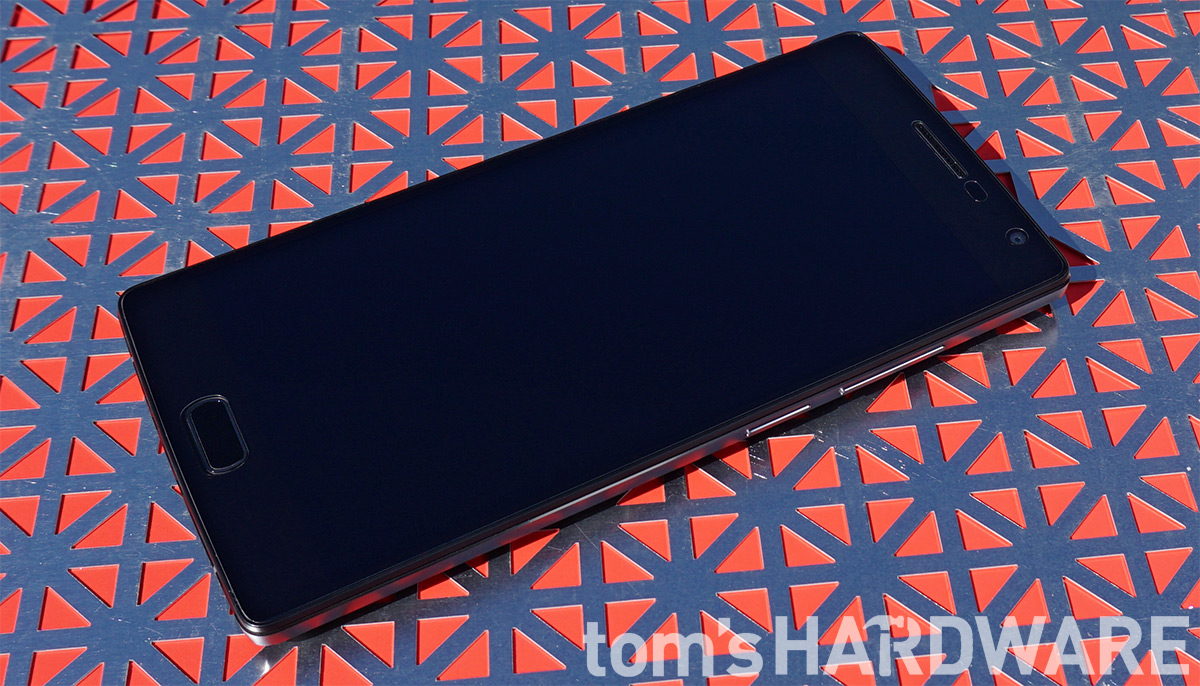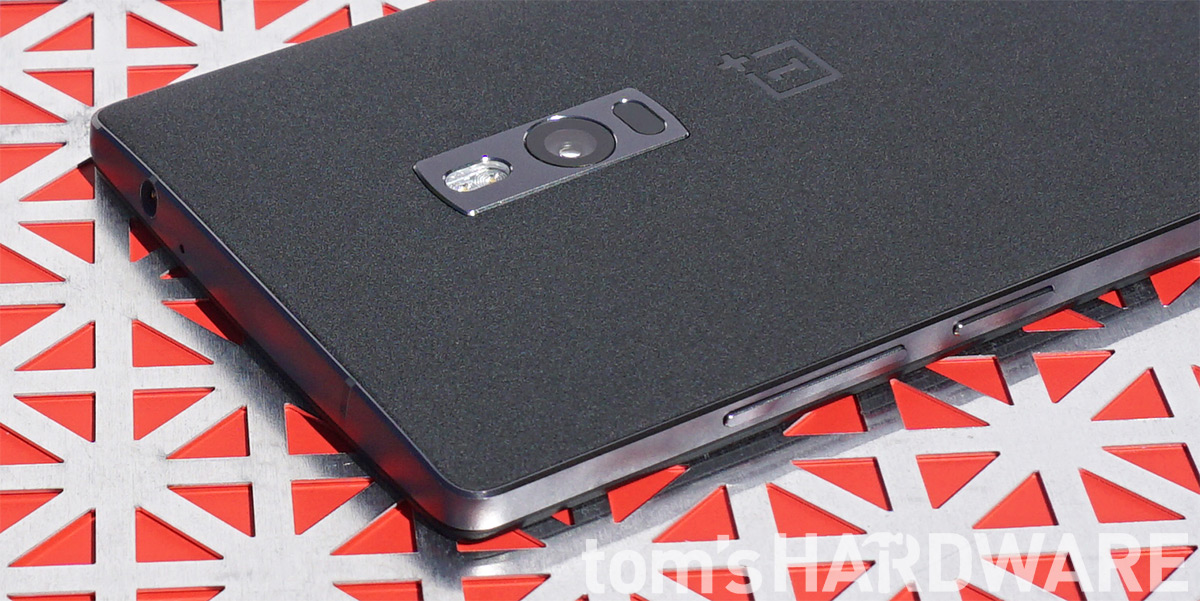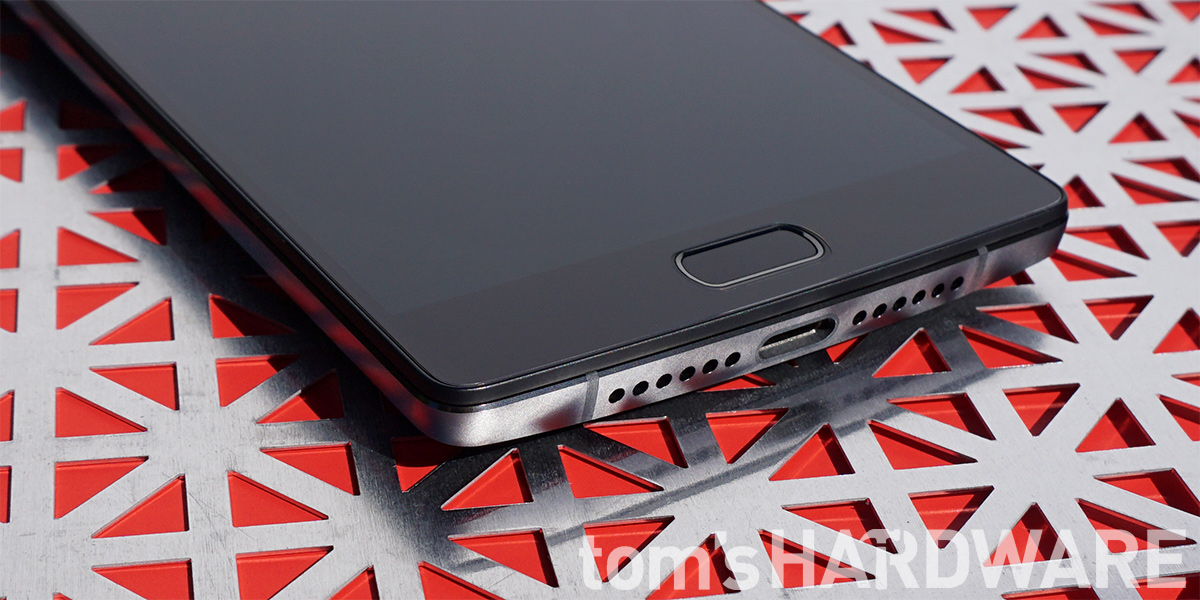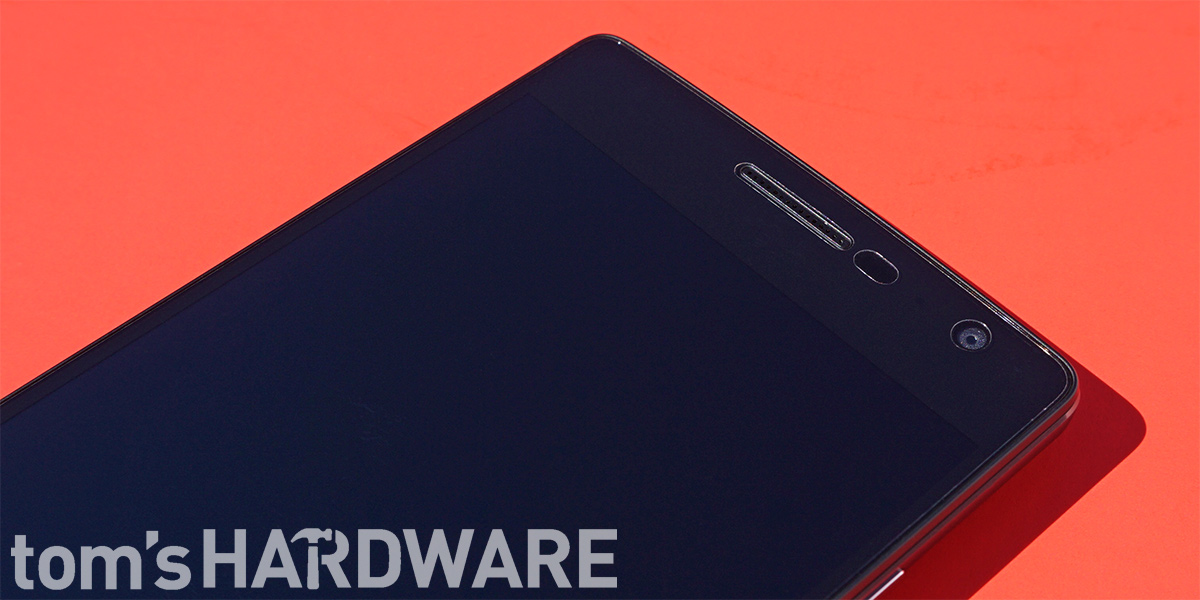OnePlus 2 Review
OnePlus proudly boasts that its latest smartphone is a "flagship killer." Does the OnePlus 2 have the arsenal to slay its competitors or is its metal chassis just filled with hot air?
Why you can trust Tom's Hardware
Conclusion
The smartphone world has become especially inhospitable in the past couple of years. While Samsung and Apple maintain their stranglehold on the high end, many manufacturers have been racing to claim the middle by blending good specs, average build quality, and reasonable prices. OnePlus subverts this norm by producing a device with premium build quality and specs at a midrange price. The phone feels very comfortable to hold and the aluminum-magnesium frame screams flagship instead of midrange device.
Is the OnePlus 2 a "2016 flagship killer" like OnePlus claims? Well, sort of. It certainly cannot match the features and performance of the latest flagship devices. NFC, a feature even many low-end Android devices include, is notably lacking. OnePlus justifies this omission by stating that it's not a feature most of its users will regularly use. But this seems a bit disingenuous; the company future proofs the phone by utilizing a USB Type-C port, but decides not to include NFC, a necessary component of Android Pay. Speaking of the USB Type-C port, it does not support fast charging, a compromise most flagships do not make. And the OnePlus 2 lacks luxury features such as wireless charging and environmental protection.
Performance is generally good; it launches apps quickly and navigating the UI feels smooth. However, it still falls short of what the best Samsung and Apple have to offer, and will not be able to keep up with 2016 flagships using the newer Snapdragon 820 SoC. There's also the issue of thermal throttling. OnePlus does a decent job managing the Snapdragon 810's thermal issues both with hardware and software. The OnePlus 2 includes a nice heat sink design to move heat away from the SoC, and OnePlus limits heat generation by reducing the peak clock frequency of the A57 CPU cluster. Heat is further mitigated by leaving two of the four A57 cores turned off most of the time and by using the lower-power A53 cluster exclusively for single-threaded or light multi-threaded workloads. These tactics make the OnePlus 2's octa-core Snapdragon 810 perform more like the hexa-core Snapdragon 808 or, worst case, like an overclocked quad-core Snapdragon 410. Perhaps it would have been better to simply use the 808 instead, especially since it's not using the additional media features the 810 offers.
Camera performance is also quite good, perhaps surprisingly so, but falls just shy of the best flagships. The 13 MP rear camera with OIS does very well setting exposure and white balance, and it keeps image noise relatively low, which is a big problem with the OnePlus One. The laser autofocus struggles occasionally, though, forcing the camera to fall back to a slower autofocus method. But the biggest issue affecting image quality has nothing to do with hardware; it's a software setting that applies a high level of JPEG image compression, resulting in noticeable artifacts in still images. This issue can be sidestepped by using a third-party camera app, but it's small details like this that hold the OnePlus 2 back.
Video is sharp and crisp when recording at 4K but starts to get muddy and lose detail when the resolution is lowered. There's no option to record at 1080p@60fps even though both the camera sensor and SoC supports it, and the quality of the 720p slow-motion video is very bad. The OnePlus 2 uses OIS during recording to reduce vibrations from hand shake, but the lack of EIS means videos do not look as smooth as they could be. It also does not use HDR when recording video. Based on how poor the HDR mode is for still images, however, this might not be a bad thing. Overall, video recording is a pretty average affair with the OnePlus 2.
Display performance is also a little disappointing. While it uses a high-quality 1080p IPS panel that delivers exceptional brightness and black levels, OnePlus fails to calibrate it properly. The color temperature is too cool, giving white backgrounds an obvious blue tint. Color accuracy, while not the worst we've seen, is far from great, and many colors appear undersaturated, giving the screen a washed-out look.
The OnePlus 2 comes with the company's new OxygenOS. Unlike the arbitrary changes seen in other OEM flavors of Android, OnePlus sticks very close to a stock Google experience. The few additions it makes are actually useful, particularly the UI customization options such as being able to remap buttons, adjust the notification LED, and change themes. Whereas other OEMs fill their devices to the brim with apps and features the user may never use, OnePlus presents the user with a blank slate they can customize as they see fit.
Get Tom's Hardware's best news and in-depth reviews, straight to your inbox.
The OnePlus 2 does not have all the bells and whistles of a premium flagship, but it looks the part and still offers a compelling experience. It's not going to amaze you with its performance, but it still performs well, similar to the LG G4. No, the OnePlus 2 is not going to kill any flagships on these battlefields, maybe just inflict some minor wounds. But it does have a potent weapon, one that will certainly cause flagship casualties in a guerrilla style campaign: price. Delivering functionality and performance that's close enough to flagship levels at around half the price is what makes this phone dangerous.
Before OnePlus can face the smartphone juggernauts head to head, though, it needs to realize that battles are not won with impressive spec sheets alone. It's implementation and attention to detail that make products stand out. Degrading image quality unnecessarily with aggressive JPEG compression and reducing the performance of Google apps to save a few minutes of battery life are two details where OnePlus misses the target. It also seems kind of silly for OnePlus to pay extra money for premium hardware and then not fully utilize its capabilities, but this is true for the Snapdragon 810 SoC, the camera sensors, the USB Type-C port, and the display. The OnePlus 2 is a better overall phone than the OnePlus One, so the company seems to at least be moving in the right direction.
MORE: All Smartphone ContentMORE: All Tablet Content
Brian Magsipoc is an Associate Contributing Writer for Tom's Hardware, covering Smartphones.
Matt Humrick is a Staff Editor at Tom's Hardware, covering Smartphones and Tablets. Follow him on Twitter.
Follow Tom's Hardware on Twitter, Facebook and Google+.
-
ChuckUfarleys How much did Oneplus pay you for this inane review that is for a phone that is 6 months old?Reply
You reviewers NEVER bring up the terrible customer service, the terrible buggy Oxygen O.S., the constant everyday posts about how bad the Two is in their own forum.
Why would you even use the One for comparison, it's a TWO year old phone!
Why is that, are you too afraid to NOT recommend this phone? -
juanjovargas @ChuckUfarleys then a half-price and 6-months-old phone is comparable in terms of performance to the best phones of every brand? YESReply -
ctmk I rather get a redmi note.Reply
https://www.youtube.com/watch?v=gGLW-kzh6sI
the CPU is only effectively quad core 1.55ghz and will throttle to 800mhz in just few min of video soft decoding stress test. -
ubercake Looks like the new ZenPhone with its 3x optical zoom on the rear-facing camera may also be a looker in this price range.Reply -
Abdurrasheed Desai Lol the OP2s price just went down. It is more worth it now than it ever was.Reply -
mellis I still like my OnePlusOne. It also works great with Straigthtalk. No contract and no bloatware is the way to go! No way am I going to over $400 for a phone.Reply -
Spinachy Operating Systems all have security problems that need to be patched regularly. This is an important buying consideration for me. You do not mention on what schedule OnePlus will be patching the OS?Reply -
zvancu I own a OnePlus 2 and I have to say that I would wish that at least one of the reviews I see online would mention how terrible their customer support is. It seems that it's pretty common knowledge, but I never saw this before actually buying the phone.Reply
I have to say that at first I was happy with the device, but now I am having some issues with it and I contacted the support. At first they were stalling with some meaningless questions (like what's my IMEI even I had already provided it) but now I got to the point where they are simply ignoring me. It has been more then a week in which I wrote 5 messages and they did not even acknowledge that they saw them, not to mention actually doing something. -
jacobian The bottom line it seems, there is no need to upgrade if you already own a Oneplus One. I have one Oneplus One (64GB) in the family running the stock CyanogenOS, and I see no reason to upgrade it. Very good smartphone all around. Hope the next generation will be better.Reply



